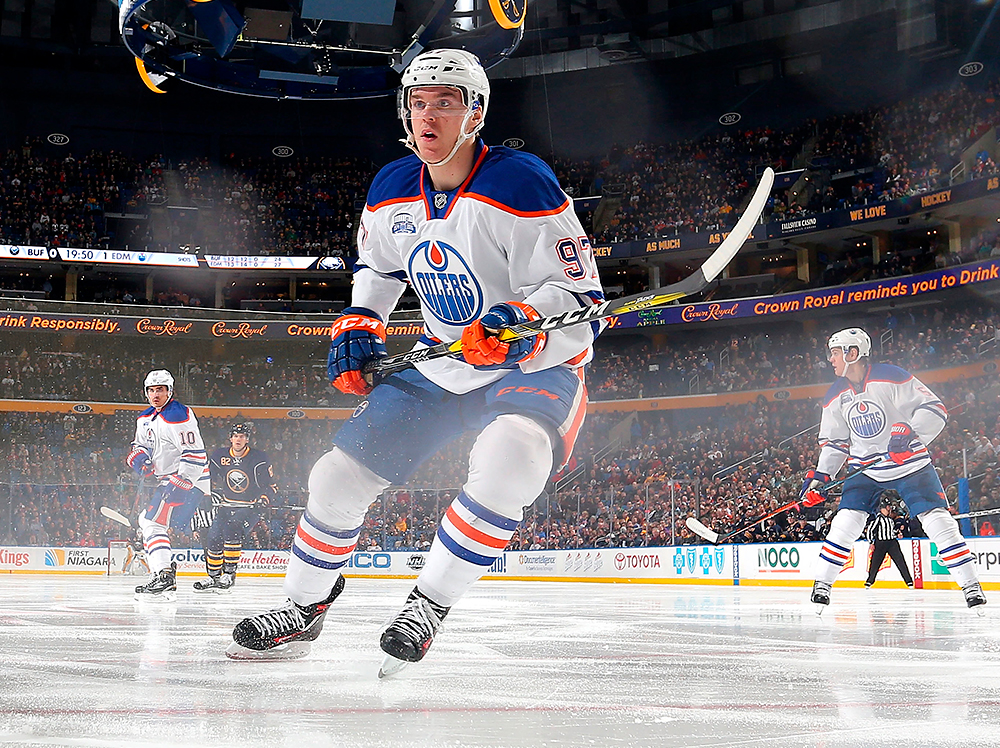Hey, if hockey were your full-time job, you'd skate like Connor McDavid, too, right? Sorry, no. But in case you're holding out hope, we turned to some experts to figure out what it would take. Put each piece of the puzzle together and - boom - you're a two-time Art Ross Trophy winner. Miss a piece and, at best, you're lumbering along on the fourth line.
So follow these simple steps. Add the drive and passion to practise every day, a supreme tactical grasp of hockey, the skills to execute it while skating 40 km/h, and you're on your way to an incredible hockey career!
Have athletic genes
Look at your parents. Are they the spitting image of Hal Johnson and Joanne McLeod? Good! According to Michael Cook, a head coach at the Green & Gold Sport System, genetic makeup differentiates good from great, influencing your muscle size, flexibility and lung capacity.
Have a high proportion of type IIa muscle fibres
OK, maybe your parents are super ripped, but are they the right kind of ripped? There are three types of muscle fibres. Type I, slow-twitch muscle fibres, are plentiful in marathoners. Type IIx, quick-twitch fibres, are ideal for sprinters. "If we did a muscle biopsy on McDavid, we'd find an abundance of the third kind, type IIa fibres," Cook says. They are still quick-twitch, he explains, but have characteristics that allow them to better use oxygen, providing better endurance.
Know how to use hockey skates effectively
Hockey skates have a double edge that's great for gripping ice, not so great for speed. Sean Maw, '02 PhD, a College of Engineering professor at the University of Saskatchewan. A coach and former speedskater, he says hockey skates produce friction, plowing into the ice. "Watch McDavid. He's pushing his skates in the right direction for optimal speed. As soon as he's finished pushing with one blade, he's lifting the other - he's not gliding."
Don't waste energy
Skating and rollerblading since he was three, McDavid's gotten pretty good at maximizing efficiency with each stride. "He has good biomechanics for speed," Maw says. "He has a nice transfer of weight, like a skier doing moguls. He has short, powerful strides and a quiet upper body when he corners. He's efficient and doesn't waste energy with his movements."
Be brave
"Elite performers have a high sense of self-confidence and good adaptive motivational tendencies," says Amber Mosewich, an assistant professor in the Faculty of Kinesiology, Sport, and Recreation who focuses on sports psychology. "They see demanding situations as a challenge, not a threat, thinking, 'This is my chance to show what I'm made of' versus 'I hope these people don't annihilate me.'"
Never suffer a major knee injury
You're on the ice. In the crowd, your mom and dad, Hal and Joanne, wave and cheer. You flex your numerous type IIa muscle fibres. You shift around on your skates with great biomechanics, not wasting any energy. You're super confident. Then you fall awkwardly and tear your knee ligaments. Dang. "Ask any athlete who's had a major joint injury," says Alex Game, '97 BPE, '99 MSc, director of the Sport and Health Assessment Centre at the U of A. "You can repair it, rehab and get back to playing, but it's never as strong."

We at New Trail welcome your comments. Robust debate and criticism are encouraged, provided it is respectful. We reserve the right to reject comments, images or links that attack ethnicity, nationality, religion, gender or sexual orientation; that include offensive language, threats, spam; are fraudulent or defamatory; infringe on copyright or trademarks; and that just generally aren’t very nice. Discussion is monitored and violation of these guidelines will result in comments being disabled.